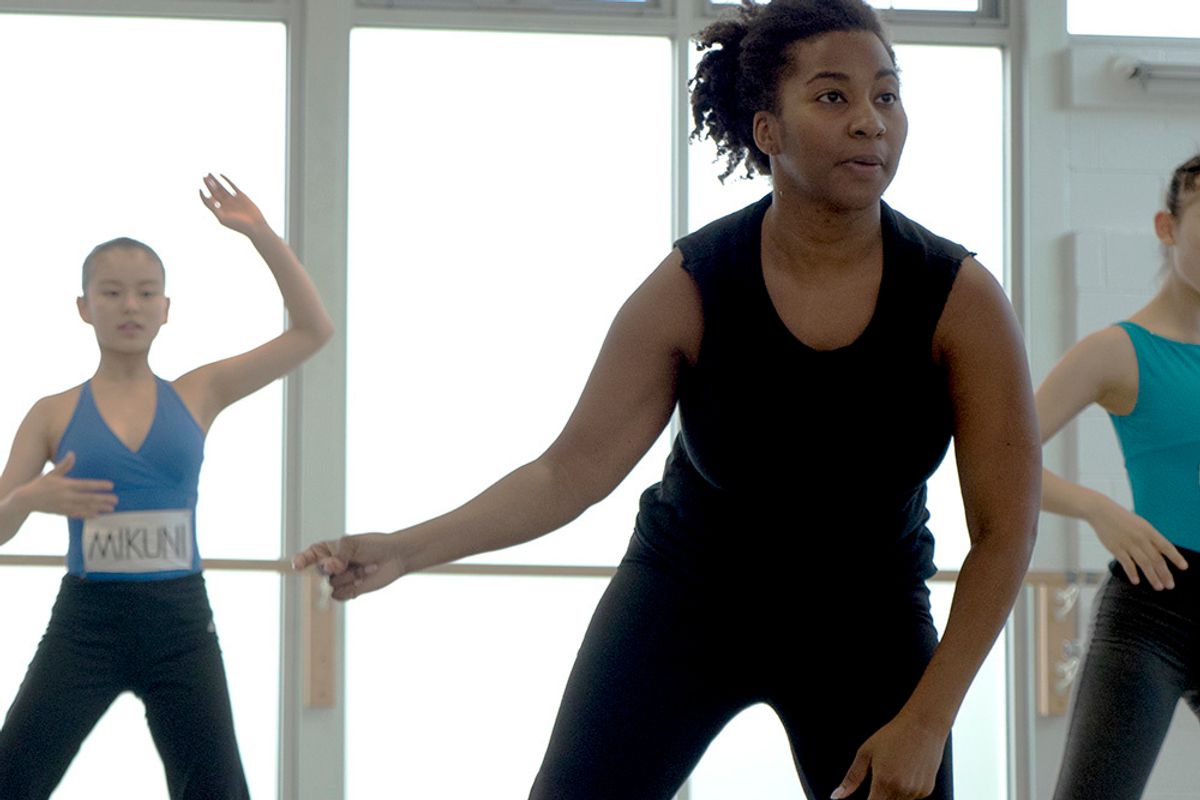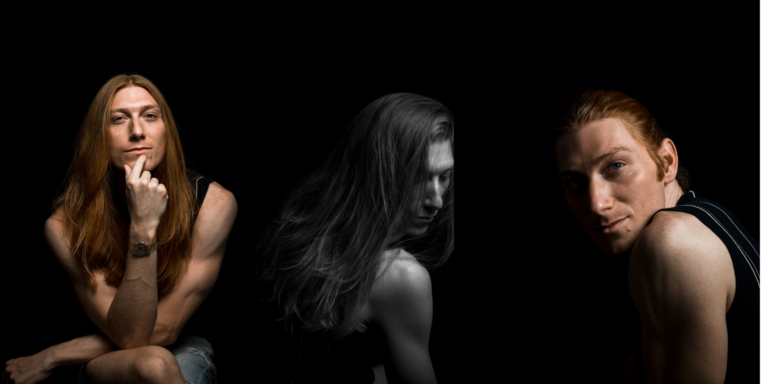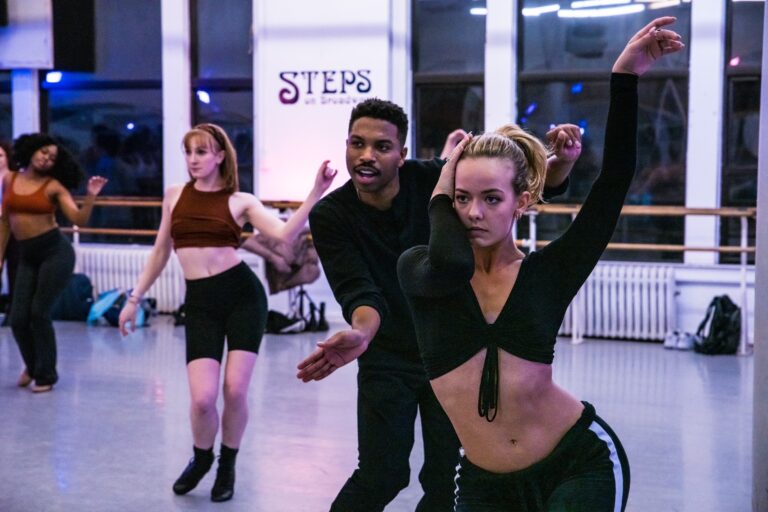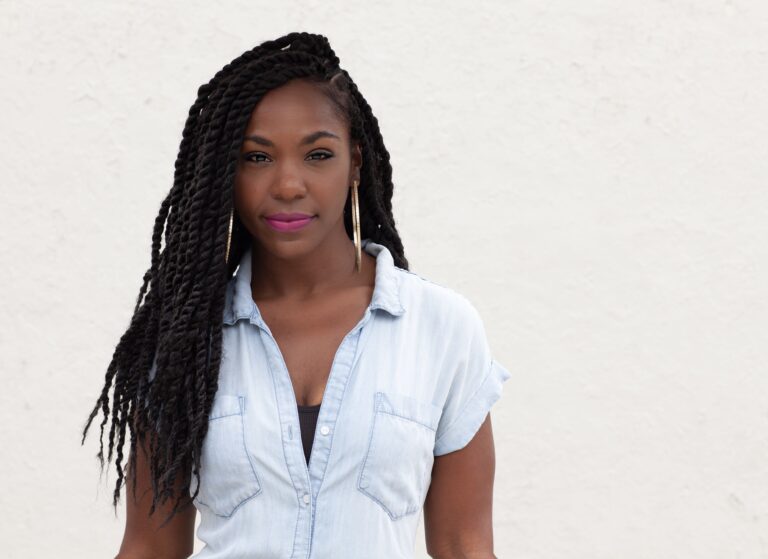
Teachers from coast to coast are pushing students to move outside the constraints of popular music. There is a consensus that the earlier you introduce varied musical forms, the more adept and adaptable a dancer’s musicality will be.
New York–based jazz scholar and teacher Melanie George notices that many students’ relationships to music can be reductive: They may think exclusively about lyrics or accents. But jazz, for example, is about swinging: an embodied comprehension of instrumentation that only comes with musical acuity. “Students are ready for this specificity, even if we aren’t giving it to them,” she says. When her students understand that there is a technique to listening, it becomes less about going forward, and more about going deeper into the sound and into their bodies.
Stretching musical knowledge is about fully serving students and the field—meeting students’ capacities and honoring the cultural multiplicity of our country and artform. Here’s advice from teachers who are emphasizing musical literacy.
Start early
Joni Wilson at Tanner Dance in Salt Lake City teaches creative movement, ballet and dance theater to students ages 3 to 18. She starts immediately with educating her students’ ears. The idea? To “inform the child’s ability to cognitively and physically open themselves to artistic input,” she says, and allow for intrinsic movement development. She plays music that ranges from waltzes to jazz and early American folk to African and polyrhythmic percussion.
While she has never experienced extreme resistance from her young dancers, they sometimes giggle at unknown sounds, like from a sousaphone or the ridgeback güiro. That’s when, Wilson says, it’s her job to “educate them enough to know what this is, and why it sounds like it does. So we study what the instrument looks like and discuss the skill it takes to play it.” Her little dancers may start silly, but they become thoughtful and move to new instruments with piqued interest. By the time they’re teens, students are able to investigate their artistry with confidence and command of music.
Mary Ann Harp has run Just to Dance Studio for 35 years in Carlinville, Illinois, and she cultivates musical sensibility at the beginner level by putting on alternate songs to fixed choreography. “I sometimes choreograph whole dances to one song and then switch to music of a different tempo and style,” she says. “The students can observe that their energy is different. Even very young dancers can determine if the music makes them want to float or jump or twirl.”
Shake up your own counting habits
In Hayward, across the bay from San Francisco, Angela Demmel, founder of Moreau Catholic High School Dance Program, starts students with familiar, sometimes even pop music. Slowly, she adds complex and irregular forms.
To reveal students’ timing habits, Demmel will sometimes start a combination on count 8. “This is a simple tactic to get them listening, counting and feeling differently. Dancers often default to moving big only on the 1 and the 5,” she says. “It’s partly because instructors can have those biases. I always want to play with that. Starting on 8, or emphasizing a major movement on count 3, I can begin to uproot some rhythmic tendencies.”
Demmel attached a catchy string of words to a formidable meter to tackle Dave Brubeck’s “Blue Rondo à la Turk.” She taught her dancers to chant: “I want I want I want choc-o-late, I want I want I want choc-o-late, straw-ber-ry, straw-ber-ry, straw-ber-ry.” It broke down the mixed meter: 1212123, 1212123, 123123123. Emphasizing the syllables demystified the beat. It lightened up the students to the task, and when they eventually nailed it, Demmel noticed a physical shift. “They were no longer fighting. They finally eased into it,” she says.
Trust students’ problem-solving ability
George insists that you “cannot teach jazz without teaching musicality.” She noticed a change in students after No Child Left Behind forced educators to teach to the standardized test. Students became terrified of being wrong. “But I believe in generative learning. I am a conduit for students’ knowledge,” she says. “A major part of their learning is figuring something out.”
George gives preparatory listening assignments to coax students from immobility to interest in jazz tunes. Students choose three jazz artists, broken up by genre or instrument. They must listen closely to the music and then write what they imagine the corresponding movement would be. This gives them a personal window into a style that’s foreign to them.
George teaches a layered isolation phrase to Bill Evans’ “Night and Day.” It opens with a polyrhythmic Latin percussion section and shifts into a swing. It’s not the physical action of the steps that’s hard; it’s the listening. She’ll play it multiple times until the students are truly inside of the song and “the groove.”
George stresses that young people are more capable than we assume. “It’s our responsibility to open the space to more sophisticated ways of thinking about rhythm and their bodies,” she says



